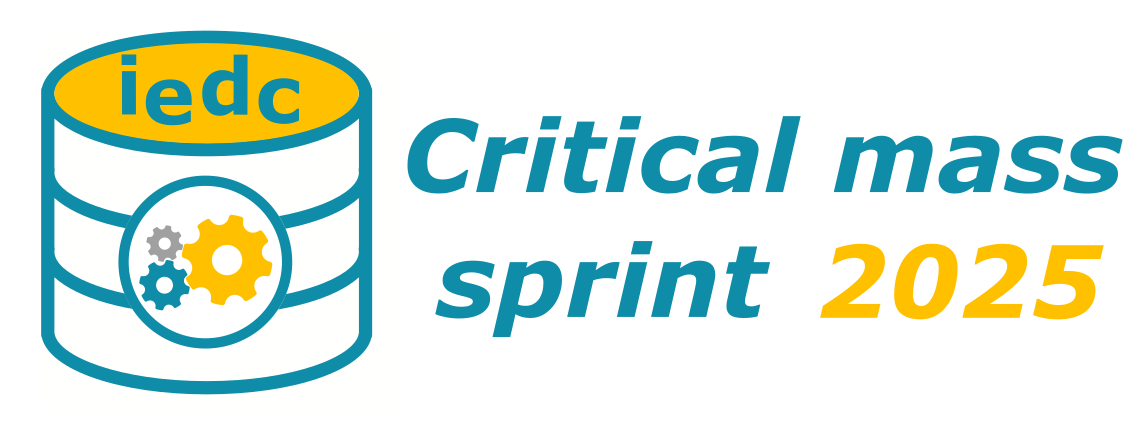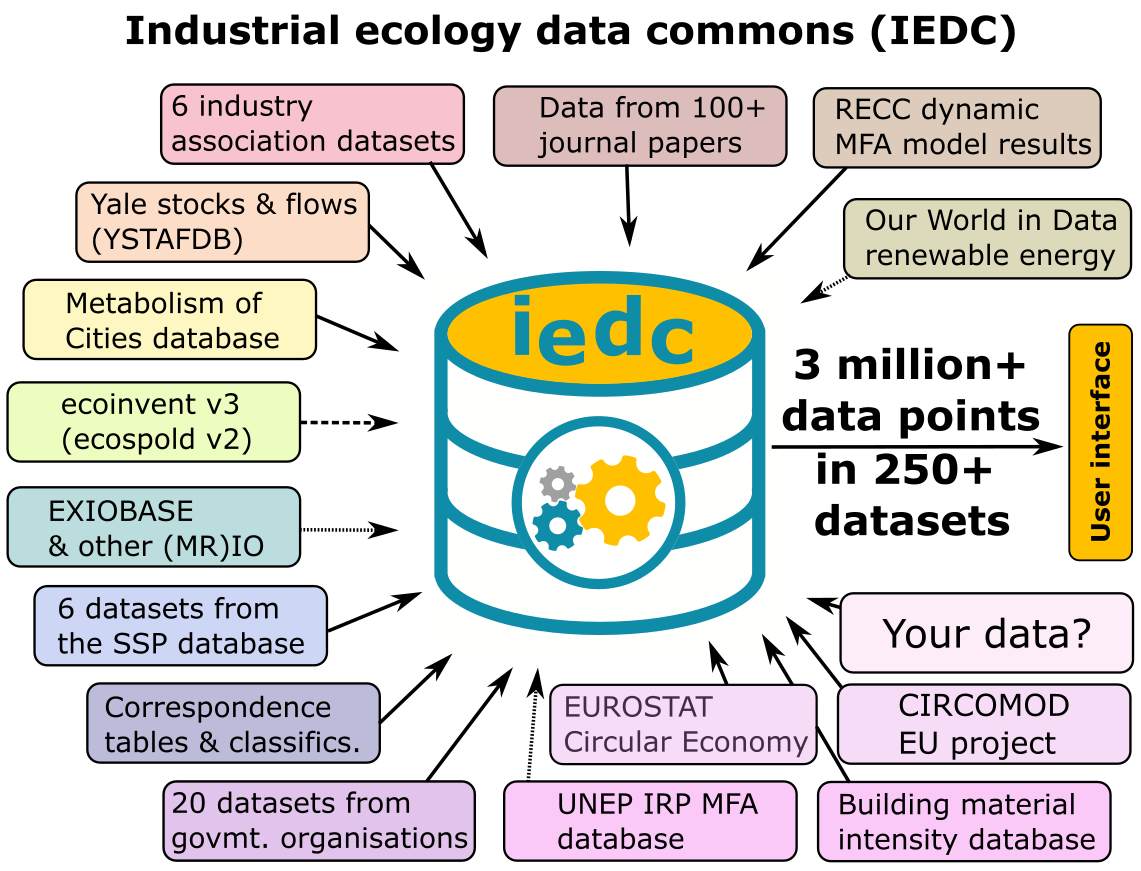2025 is the year when we move the industrial ecology data commons prototype, launched in 2018, into a functional and helpful data archiving and retrieval tool for the entire industrial ecology community!

With the help of the IEF team and the CIRCOMOD EU Horizon project colleagues (https://circomod.eu/), we plan to collect, format, and upload a larger number of datasets on product material composition, energy intensity, and lifetimes of products, focussing on products and commodities including appliances, buildings, vehicles, infrastructure, industrial assets, and energy system technologies. Newly available data on circular economy measures and material criticality will be included as well. To be able to quickly find relevant data, we will expand and improve the IEDC’s search interfaces.
Critical mass sprint goal: By the end of 2025, the IEDC contains enough product and material-related data that searching the IEDC becomes a useful screening step and first iteration for data collection for MFA and LCA researchers and consultants alike. With its focus on products and commodities, the IEDC could even become an ‘LCA foreground database’, next to serving socio-metabolic and industrial ecology research in general.
ISIE-SEM Perpetual Online conference session: More information about this initiative will be shared in the next SIE-SEM Perpetual Online conference session How to contribute to the Industrial Ecology Data Commons - Critical Mass Sprint 2025.
Time: Monday, May 19th, 15:00-16:00 CEST (UTC+2)
Zoom meeting registration link: https://uni-freiburg.zoom-x.de/meeting/register/bHr8TJdJSEudZ5-XkKc7AA
Access the database via https://www.database.industrialecology.uni-freiburg.de/

What are we looking for? The IEDC contains table-based data on socio-economic metabolism, grouped into datasets with a size of 1 to about 50000 values per dataset. Objects (products, materials) and processes in a given system are quantified at different layers (items, mass, energy, monetary, …), either at scale or per unit. More than 30 data types in eight data categories have been defined so far (see the data type scheme for an overview). In particular, we are looking to expand the IEDC with data of the following types:
- Flow (1_F_) by material
- Flow (1_F_) by product/commodity
- In-use stock (2_IUS_) by material
- In-use stock (2_IUS_) by product/commodity
- Population (2_P_) by country/region
- Lifetime (3_LT_) by product/commodity
- Material composition (3_MC_) by material
- Material composition (3_MC_) by product/commodity
- Specific energy consumption of products (3_EI_) by product/commodity
- Sector splits and other shares (3_SHA_) by chemical element
- Yield coefficient (4_PY_) by product/manufacturing process
- Yield coefficient (4_PY_) by material
- Process extension (4_PE_) by process
- Unit process inventory (4_UPI_) by process
- Criticality indicators (6_CR) by chemical element
- Criticality indicators (6_CR) by material
Why should I contribute? Submitting your data to the IEDC is free advertisement for your research and data! Most datasets are searchable by the name of the first author of the corresponding publication. Submitting your data to the IEDC increases the visibility of your research, and it helps others build on your work in their own research. A strong community database increases the visibility of the entire field and leads to better research output via the use of more comprehensive and up to date data. If you cannot or don’t want to share your data via the IEDC, it’s still possible to just submit an entry to the data catalogue, so that your data can be found and then obtained via other channels. This procedure also applies to datasets that are too large to be inserted into the IEDC or that are already consistently formatted in other data formats. Finally, using common data formats for the different data types and consistent labels for the different materials, products, etc. helps with the reuse and sharing of data across projects and research groups.
How can I contribute? In order to submit data to the IEDC, follow these steps:
- Check whether you have the necessary rights to share these data publicly. If yes, reach out to the IEDC team via in4mation*aet*indecol.uni-freiburg.de to check if your data are suitable for the IEDC.
- Identify what type your data belong to. See the list of data types (http://www.database.industrialecology.uni-freiburg.de/resources/IEDC_DataTypes_Overview.pdf) and browse for and download examples from the main search interface (by entering the type into the search field: 1_F, 3_MC, etc.)
- Format your data into an IEDC data template, using the sample templates and following the instructions in the video tutorial provided on the validation page: https://www.industrialecology.uni-freiburg.de/iedcValidate.aspx
- Run your templates through the validator and correct the description (step 1) and labels (step 2) according to the automatic feedback provided.
- Contact the IEDC team via in4mation*aet*indecol.uni-freiburg.de if your template is validated to upload the data.
Access the database via https://www.database.industrialecology.uni-freiburg.de/
